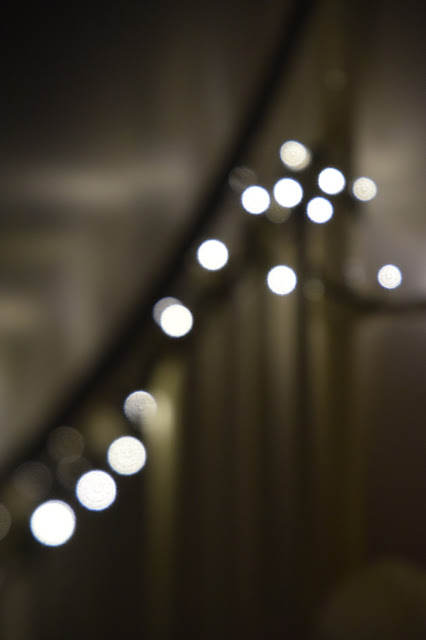Bokeh
This task was study and create images using the technique of Bokeh. Bokeh, also known as “Boke” is one of the most popular subjects in photography. The reason why it is so popular, is because Bokeh
makes photographs visually appealing, forcing us to focus our attention
on a particular area of the image. The word comes from Japanese
language, which literally translates as “blur”. I was instantly drawn to this technique and thought that it could be used within my landscapes in order to created a heightened visual effect.
 |
| Bokeh is the quality of out-of-focus or blurry parts of the image
rendered by a specific camera lens. It is not actually the blur itself or the amount of
blur in the foreground or the background of a subject which is a common misunderstanding. The blur that is often present in an image which separates a subject from the
background is the result of shallow depth of field and is commonly called “background blur”. The quality and feel
of the background/foreground blur and reflected points of light,
however, is what photographers call Bokeh. The above image shows the overall effect which can be achieved with Bokeh and it can give an interesting alternative perception of a specific subject. |
 |
My first artist image i felt portrayed the effect nicely as it wasn't the key intention of the photographer to create Bokeh. The bench is the main focal point which catches the viewers eye as is the only part of the image which is actually in focus. The Bokeh which is shown in the background, however, adds to the interest of the shot, softens the overall frame and actually enhances the final image. I really liked the technique displayed in this photograph and thought that the image was eyecatching, although the subject of the shot was quite ordinary. The Overall effect gave an almost sparkle to the image which I loved. The quality of the blur is very pleasing and the transition between the background colours was smooth.

The second artist image above is very different in style from the first, however, it still shows a very good technique of Bokeh. This shot was taken using a 300mm lens and the image of the bird of prey if pin sharp. The background to the image however, shows lovely Bokeh as the whole background is highly blurred but seamlessly melts together to create a lovely soft feel to the photograph. I liked the contrasts in this image and I think that the good use of Bokeh in the background allows the subject to be enhanced beautifully. |
 |
My final artist image is of a busy street scene, taken at dusk. I enjoyed this image as you were able to easily see the photographers intention and the headlights of the cars created a lovely blurred effect with good Bokeh.
The artist of this image is called Alan Lee, and he creates regular Bokeh images and this image was full of vibrant colour, light and interest. I Liked the way you were still able to understand the setting of the image, whilst getting an almost abstract view of the street. The different colours in the street signs worked well and enhanced the Bokeh in this instance.
My own Photographs
 |
| This was the first image which i took to experiment using the process. The reason why this image is significantly brightened is due to the fact I used a studio light from a distance to lighten the background of the image. For my first attempt I was happy with the concept,however, I felt that the background was too light as it washed out the fairy lights I was using to create the bokeh. I realised that colour and light intensity played a huge part in achieving successfully Bokeh so began adjusting my settings and light sources to try and improve my images. |

My second attempt above, was much more successful and I was able to see more definition in my work. The fairy lights gave a pleasing effect against the darker background and this resulted in good levels of Bokeh. I did however, see that there were sharp edges to the circles rather than a smooth blurred effect which is what I was trying to obtain. I liked this image as the effect portrayed was unusual, however, I decided that I would try and have a focal point to my final shot which would hopefully create a more interesting visual image. If I had a primary focal point, hopefully I could keep this is sharp focus and blur the background by using a low aperture. I would also try to select a more colourful setting to enhance my image.

My Final image, taken of my dog Teasel tries to emulate the photograph of the bird of prey. I used a 400mm lens to take this photograph and I was very pleased with the overall Bokeh in my image. Teasel's head remained completely in focus and very sharp, whilst the background of our house produced a lovely pink blurred hue with the window blending into the brickwork very successfully. It did take me a little while to achieve this photograph as initially I did not set my aperture to the lowest number and the plain green background of the lawn did not achieve enough interest. I also struggled with exposure and was not close enough to create the desired Bokeh effect.
Contact Sheet
|







